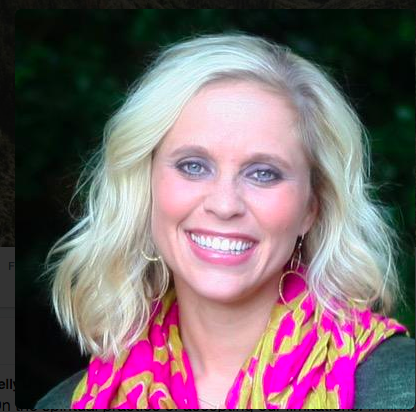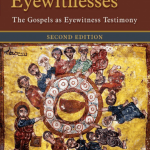 After the storm, by Kelly Edmiston who is a minister at the First Colony Church of Christ in Houston Texas.
After the storm, by Kelly Edmiston who is a minister at the First Colony Church of Christ in Houston Texas.
The office was small but it felt very peaceful. The couch along one wall looked as if it could have been in a living room not too long ago. On it sat three colorful pillows and a blanket was draped casually over the back. Along the back wall sat low bookshelves housing theology, philosophy and therapy resources. I sat in the center of the couch across from the therapist. She instructed me to remember the traumatic experience as if it were a movie in my mind, starting with right before the accident up until this moment. This was my second “Eye Movement Desensitization and Reprocessing” (EMDR) therapy session. I began to take deep breaths. I tried desperately to get my inhale to last four seconds. I counted, 1. 2. 3. 4. as I took a big inhale. And then exhale. 1. 2. 3. 4. As I breathed deeply and tried to remember the events as they really happened, I felt the therapist gently tap on the left and right sides of my knees. She explained that the tapping was to simulate eye movement and brain activity.[1] I closed my eyes and she asked me to notice what happened in my body. As my mind went back to that place and time I began to feel a golf-ball sized lump rising in my throat. I started to panic. Would it cut off my air supply? Next I noticed a pain in my forehead. It was so intense that it seemed lodged somewhere deep in my sinus cavities.
I heard myself saying, “I can’t remember…”
“What is your distress level?” She calmly asked me.
It was a ten, but I told her, “About an 8.”
The things I remembered came to me in disorganized clumps of images, emotions and sensations. There the experience sat like a giant pile of mixed up laundry that I could not sort through. I wanted to chunk the pile out the window in frustration. The therapist went on to explain that traumatic stress causes the brain centers containing memory and language to shut down, explaining my unprocessed pile of grief as the body’s “normal” response to trauma.
In the first post in this series I consulted Shelley Rambo’s book, “Spirit and Trauma.” You can read it here. http://www.patheos.com/blogs/jesuscreed/2017/10/18/after-the-houston-storm/
She writes, “Trauma is what does not go away. It persists in symptoms that live on in the body, in the intrusive fragments of memories that return.” [2]
Bessel van der Kolk is a leading psychiatrist and researcher on the impact of trauma on the human body. He says that when we experience trauma we disconnect from our bodies. This is why he is a strong proponent of body awareness approaches to trauma treatment (such as EMDR) as opposed to Cognitive Behavioral Therapy (CBT) which seeks to alter behavior through dialogue. Van der Kolk says that “Trauma has nothing whatsoever to do with cognition. Instead trauma has to do with your body being reset to not interpret the world as a dangerous place. That reset begins in the deep recesses of the brain with its most primitive structures, regions that no cognitive therapy can access.”[3]
“The challenge in recovering from trauma is to learn to tolerate feeling what you feel and knowing what you know without becoming overwhelmed. There are many ways to achieve this, but all involve establishing a sense of safety and the regulation of physiological arousal.”[4]
Van der Kolk and others contend that reconnecting to the body is a key piece in the post-traumatic healing journey.
I recognize that it is difficult, and could even sound a little “hokey,” (as we say in West Texas) to discuss “body centered approaches” to healing in our contemporary western culture. Generally, we live detached from our bodies and unaware of our feelings. We are expert “stuffers” here in the western world. If we experience something that we don’t like, such as fear or stress, then we stuff it deep down far away from the surface so we don’t have to experience it. And there are a variety of “stuffing” tools we can use, like a stiff drink, a gallon of ‘Cookies N Cream’ Blue Bell ice cream or an Amazon shopping binge.
Body centered approaches to trauma therapy, such as EMDR, are designed for the participant to remember the experience while feeling the reality of their feelings and simultaneously becoming aware of what is happening in the body.[5]
As I sat with the therapist during this second session, she told me to notice the lump in my throat and the tightness in my head until something shifted in my body. She didn’t ask me questions about what happened. I didn’t have answers. She didn’t advise me with a list of behavioral do’s and don’ts. I wouldn’t have been able to do them. She didn’t tell me that God was in control and that I needed to trust God more. I knew that.
In this session and in many sessions to come, she led me through an experience that invited me to reconnect to my body. It turns out that my body was the store-house for traumatic stress.[6]
EMDR has been a key part of my journey in healing from traumatic stress.[7]
Here are two “body-centered” invitations I am seeking to live out daily.
- Feel your feelings. When you want to “stuff” a feeling, don’t. Welcome the feeling you are feeling. As you welcome the very real and valid feeling, imagine introducing that feeling to the very real presence of Jesus with you.
- Spend 5-10 minutes a day noticing your breath. Try to get your inhale to match your exhale. As you breathe deeply notice your body. Do an assessment from head to toe asking, what is happening in my body? Am I holding tension somewhere specific and then focus your breath on those areas of the body.
I offer these practices to you as a fellow sojourner on this healing journey.
Disclaimer #1
This series is on healing from trauma and traumatic stress. It is inspired by own experiences, one in particular, that I describe in the final post. I offer my own story and theological reflections not as an expert or teacher but as a sojourner alongside anyone living in the aftermath of trauma. While my prayer is that this series in helpful in shedding light on the realities of trauma, it is not meant to be instructive or prescriptive. Every person’s journey is radically different due to the great majority of traumatic experiences and I am, in no way, simplifying that. For many, living in the “middle space” between death and life is a life long journey. This series is a tribute to such a journey.
Disclaimer #2
The views and opinions expressed in this article are those of the author and do not necessarily reflect the policy or position of the First Colony Church of Christ.
[1] For a more thorough understanding of Eye Movement Desensitization and Reprocessing (EMDR) therapy see http://www.emdr.com/frequent-questions/
[2] Spirit and Trauma, Shelley Rambo. p 2
[3] https://www.nytimes.com/2014/05/25/magazine/a-revolutionary-approach-to-treating-ptsd.html
[4] Ibid.
[5] http://www.emdr.com/frequent-questions/
[6] EMDR is one body centered approach to therapy that is proven very effective for victims of isolated traumatic events. My intent here is to share my own experience and shed light on the role of the body in healing, not offer a therapeutic suggestion.












